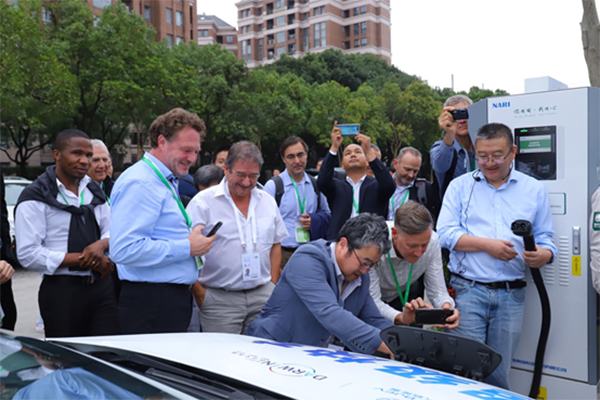The world automotive industry is undergoing significant changes to solve the increasingly major energy crisis and environmental pollution problems. Promoting electric vehicles has become an essential strategy for all countries, and the industrialization process is advancing continuously.At the early stage of industrial development, four mainstream DC interface technologies, CHAdeMO, GB/T, CCS1, and CCS2, have emerged internationally. These technologies have their characteristics and advantages but gradually reveal technical problems and safety hazards. The world electric vehicle industry urgently needs a unified, safe, and compatible charging interface. The new generation of ChaoJi charging technology does not simply refer to a high-power charging interface but is a complete DC charging system solution for electric vehicles.

History of ChaoJi Technology
In October 2017, China and Germany signed an agreement to cooperate on high-power charging technology and standards and jointly participate in developing high-power charging technology, new interface design solutions, and the construction of demonstration projects. In August 2018, the China Electricity Council and the CHAdeMO Association of Japan signed a technology and standards cooperation agreement to jointly promote the research of high-power charging technology and the development of international standards. In July 2019, at the First International Conference on New Charging Interface Project held in Japan, the new generation charging technology proposed by China was officially named ChaoJi, which means faster, safer, and more compatible. Japan prepared a new generation charging standard CHAdeMO3.0 based on the same solution in parallel.
Features of ChaoJi technology
Compared with existing interface systems, the ChaoJi charging system has outstanding advantages in improving charging power, enhancing charging safety, improving user experience, and unifying interface standards, with good forward compatibility and backward compatibility.

- Improved charging safety: The ChaoJi charging system draws on the problems in existing national and international standards, with substantial improvements and enhancements in mechanical safety, electrical safety, electric shock protection, and fire and thermal safety design.
- Boosting charging power: The cable assembly of the ChaoJi charging system adopts a liquid cooling method and adds a temperature monitoring system. The maximum charging power of the ChaoJi charging system is up to 900kW, meeting the demand for high-power charging and shortening the charging time, making charging as fast as refueling.
- New structure design: ChaoJi charging interface has the smallest size compared with the mainstream international GB2015, CHAdeMO, CCS1, and CCS standard DC charging interface, while considering the combination scheme with AC interface.
- Perfect compatibility: ChaoJi charging system fully considers the forward compatibility issue and solves the coordination problem with the existing market stock of charging facilities while providing solutions compatible with the four major charging systems of international GB2015, CHAdeMO, CCS1, and CCS2.
- Adaptation to future development: ChaoJi charging system has also made full consideration for future technology upgrades, including the ability to adapt to ultra-high power, support for new technology applications such as V2X, information encryption, and security authentication, support for future communication interface upgrades from CAN to Ethernet, and reserved upgrade space for ultra-high power charging above 1,000 amps.
ChaoJi technology promotion prospects
In the next step, China and Japan will work together to actively create an industrial ecological environment for ChaoJi charging technology, unite with domestic and foreign car manufacturers, and synchronize the upgrading of charging technology and the internationalization of standards. Through international cooperation, we will promote the incorporation of the new generation ChaoJi charging system into international standards so that ChaoJi will become a common standard with global compatibility. The global adoption of a unified charging interface has the same benefits for charging station operators, reducing the cost of charging infrastructure. CHAdeMO and CCS co-exist in Europe and the US, and the development of charging infrastructure has become more complex. Hence, allowing one charging station to adapt to more electric vehicles becomes critical.














